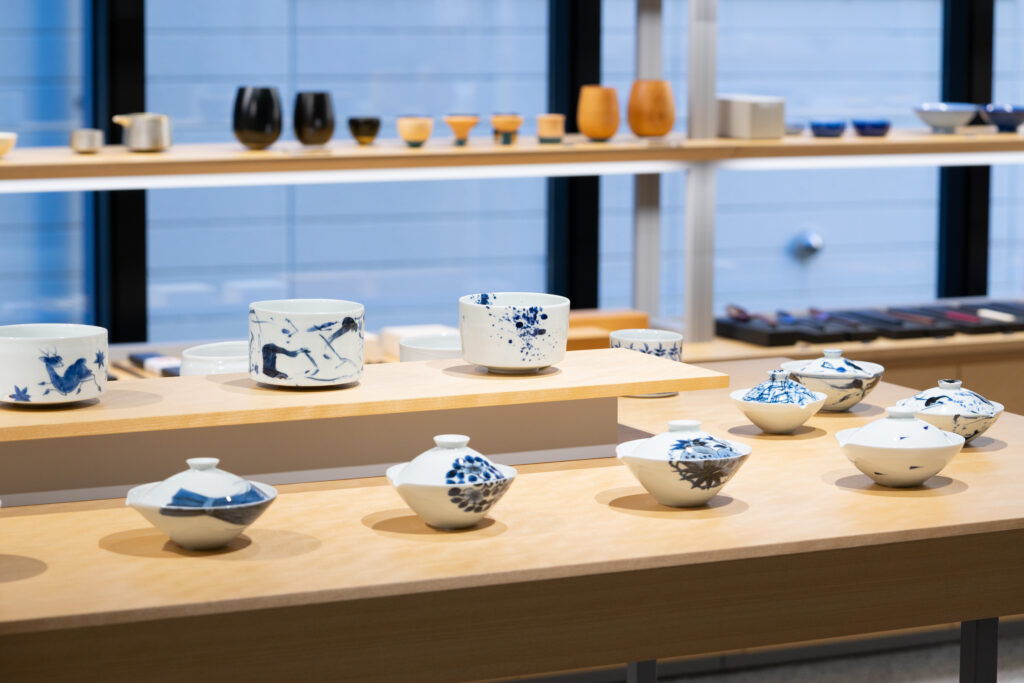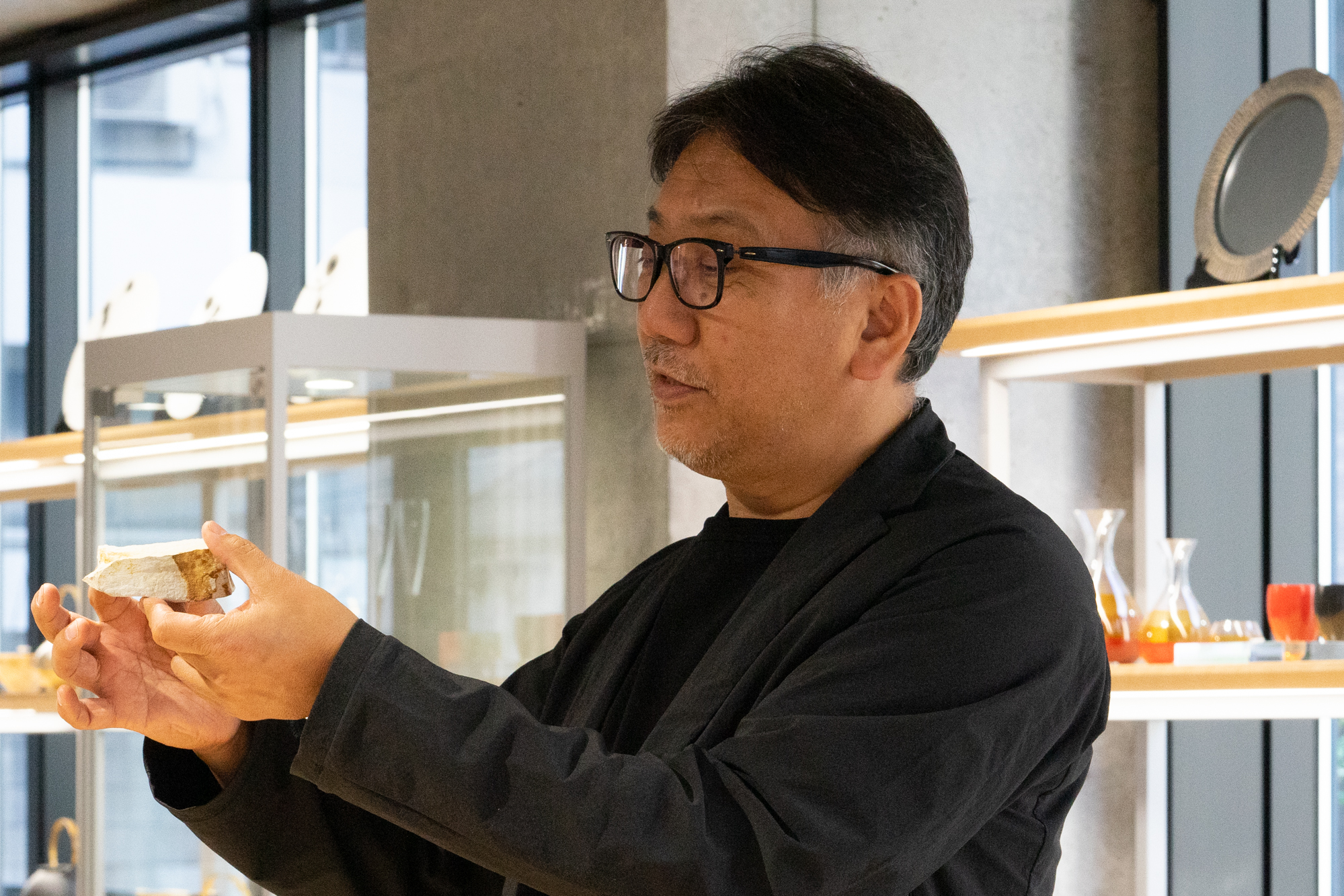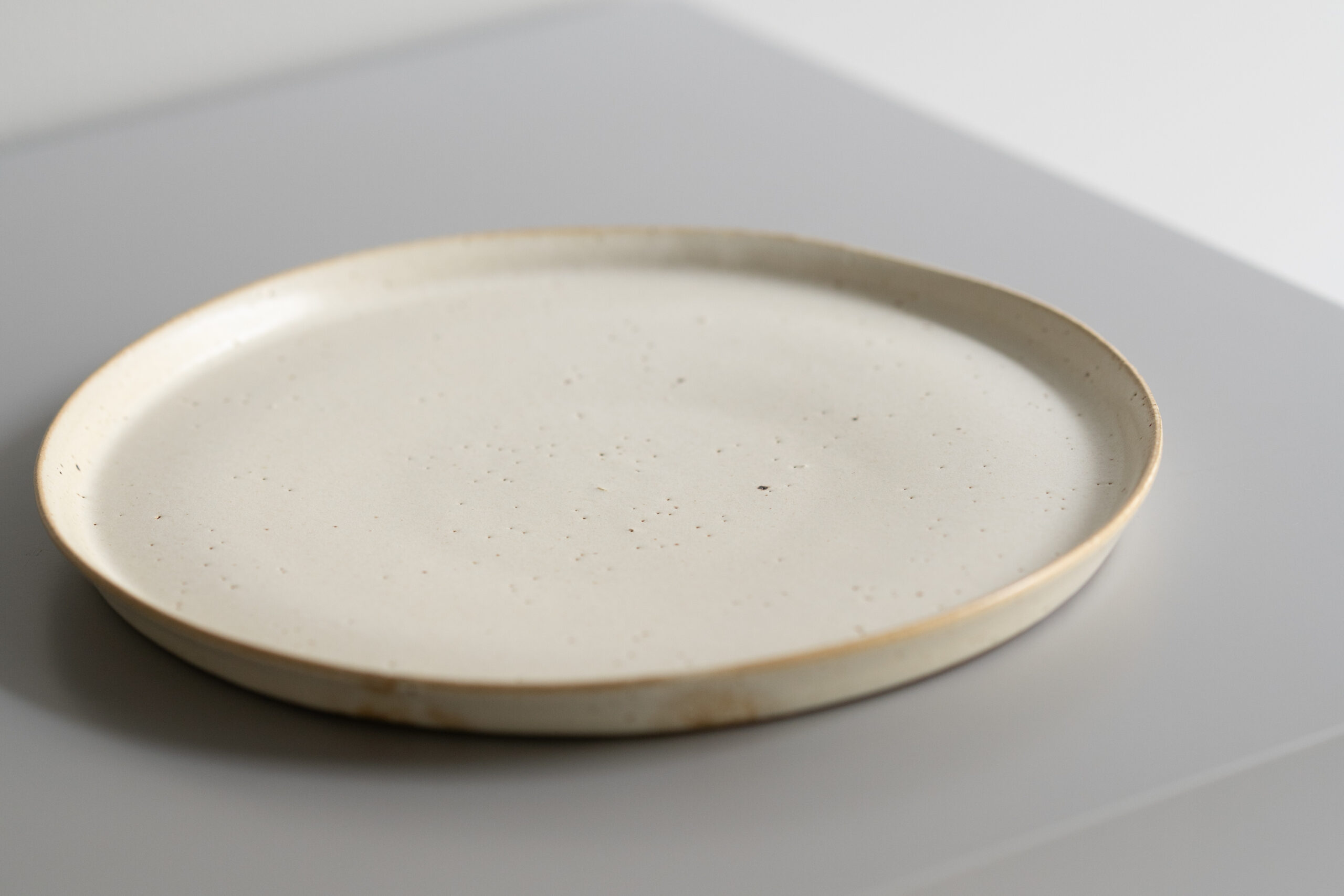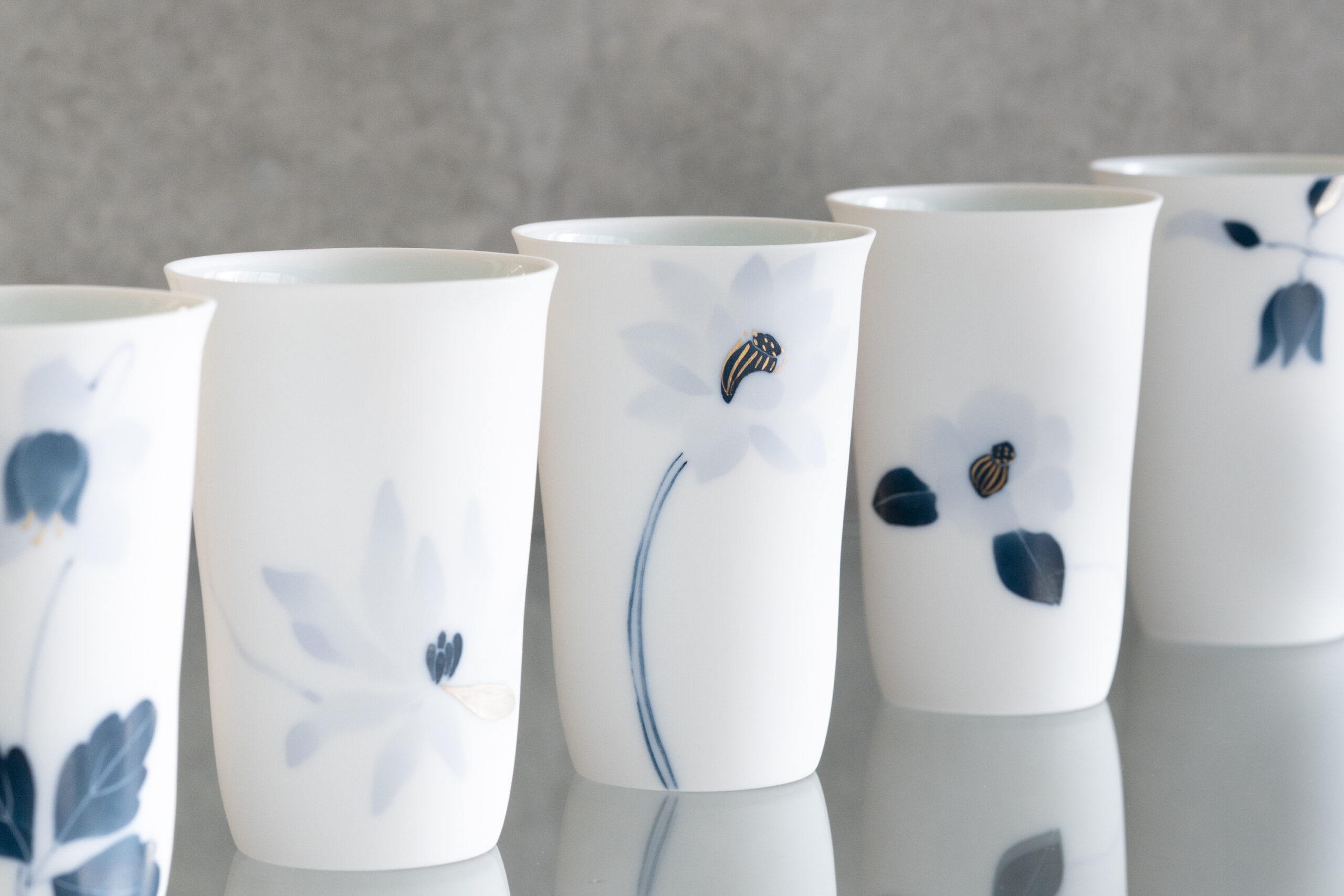Sustainable Initiatives in Arita – Izumiyama and Amakusa’s Ceramic Clay Development Project –
HULS GALLERY TOKYO held a solo exhibition of Shinji Terauchi titled “Return to Izumiyama” in November 2021. Mr. Terauchi is a ceramicist who is the fourth generation head of Riso Porcelain, a manufacturer of Arita ware.
In the talk session we hosted as an affiliated event of this exhibition, he spoke about his thoughts on creating works that originated from old Imari ware and the development of new ceramic clay in the production area.
*The article is divided into the first half and the second half (this page).
– Now, let’s talk about the regeneration project of Izumiyama’s porcelain clay*. Could you please share with us, Mr. Terauchi?
Yes. This project was launched in July this year (2021) while I was the vice-chairman of the Arita Izumiyama Quarry Partial-Affairs Association. It is an attempt to produce porcelain clay from Izumiyama porcelain stone, which is no longer used, and sell it. The association has the assets built by our predecessors, but it is dwindling due to management expenses as we do not sell porcelain stones.
After all, the important point is that the production area “Arita” was born as the raw materials were sourced in Izumiyama. Basically, an industry flourishes in a specific region because raw materials exist in the land and eventually it becomes a production area. However, in Arita, we do not use Arita’s porcelain clay but totally rely on Amakusa’s clay** from Kumamoto. I was wondering if Arita can be identified as a production area since there are no raw materials. Would it be alright as it is? This question has been stuck in the back of my mind.
Decades ago, I visited Iznik, a Turkish pottery production area for a study tour. In fact, ceramic art is popular in Turkey and there are production areas where tiles for mosques are fired. However, I couldn’t find any trace of pottery production when I was there. The guide explained that it had ceased. It happened due to the depletion of raw materials and hence, the production area was moved to Bursa. It is a town located 200km away from Iznik, where the raw materials are still available.
Similarly, without local raw materials, I thought Arita would potentially be abandoned 50 or 100 years later. This situation gave me an opportunity to rethink it. In Arita, Izumiyama’s clay is not used. The amount may be small but we can still make use of it. Reconsidering the meaning of our work that takes place in our land, I thought we must utilize the resources given in this land.
– Since when did the raw materials from Izumiyama go out of use?
The end of the Edo period.
– You explained that Izumiyama porcelain stone is more difficult to use. Do you mean it leads to a yield loss?
You are right. However, our predecessors handled it well. Izumiyama porcelain stone is not unusable, it is just difficult for us because we are accustomed to using Amakusa’s.
– Is the difference in whiteness another reason why Izumiyama stone is no longer in use?
In terms of the whiteness, there is no difference between Izumiyama porcelain stone and Amakusa’s. Since it is found in mineral veins, there are parts that are extremely white. They are similar. However, as an ore, Amakusa’s is better. We can also say that Izumiyama’s stone is younger and less mature.
By developing this new porcelain clay and selling the stones, we may be able to pass it on to the next generation of our association. I hope it will be a symbolic clay for the revival of Izumiyama and the ceramicists of Arita. I aim to create a framework for it.

– In this solo exhibition at HULS GALLERY, Izumiyama porcelain clay is used in your own work. Do you plan to use this clay for the products of Riso Porcelain in the future?
Yes. I hope so. I would like to use it properly depending on what we make.
– It sounds exciting.
From the historical point of view, Arita ware has reached its peak in the early 1700s and hasn’t gone through any innovation since then. I wish I could do something new with this clay.
– There are also issues with the porcelain clay of Amakusa. You are dealing with it with a sustainable approach. Can you elaborate further?
Yes. There are suppliers of ceramic stone in Amakusa, and we rely on them to produce our products. We found various challenges there.
Firstly, the porcelain production is declining and this has led to the lack of successors. The work of quarrying is harsh and at the same time, the workers are aging. Besides, the prices of raw materials are also rising. The price increase is a huge problem for production areas. It also affects the cost of the products. However, it is an unavoidable situation.
Looking back, Arita has only used white porcelain stones for 200 to 300 years to date. The resources are limited. The place where the stones can be harvested is only about 10 to 20m wide from the faults. The whiter parts are usually found in the middle section, and more impurities (iron content) will be revealed around the edges. We need to mine them all together in order to get the white parts. After mining the stones, those parts that contain impurities will be removed and only the good ones will be taken. We are developing new clay and wondering if we can make use of these stones which are left behind.
Even the ceramic stone suppliers have been making an effort to reduce waste. The non-white stones that contain iron will undergo reprocessing that requires a lot of time and effort. They will be broken and smashed with a hammer, dissolved with acid, and finally mixed with high-grade stones.
The idea to use low-grade materials is one of the sustainable actions that we can take immediately against the quarry. Instead of classifying the non-white stones as low quality, we should see them as a unique identity or an individuality of the clay. I hope the issue can be solved through design.
– What are the disadvantages of having impurities in the material?
First of all, it is rejected in the distribution. Iron in the material becomes a black spot like a pinhole and is subject to complaints.
– It will be noticeable if there is a black dot on a white plate. However, it may be attractive when the design embraces this mark.
Yes. For example, here is a plate of Arita ware from the Edo period. We can see black spots on this Early Imari plate made in the 1670s. There are also a few spots of iron powder and droplets of Gosu pigment. But we can accept the condition because it is an old Imari ware.
This is good, but it is not up to the current quality standard. Or we can say that the materials are too pure now.
– Plates were painted in the days of old Imari, but nowadays there are many plain and unadorned designs. Do the spots become more visible due to the absence of painting?
I don’t think so. Even if it is painted, the plate will still be rejected. (Laughing)
Do you have any specific ideas so far in terms of utilizing the abandoned porcelain stones with the aid of design?
First, I am interested in Early Imari, so I want to make modern pieces in the style of Early Imari. And I want to create ceramics that uphold a sense of craftsmanship. I would like to use the new clays from Izumiyama and Amakusa to express patterns and forms that suit our current way of living. I will turn sixty next year and I would like to take this opportunity to challenge myself, as a form of personal activity.
The Amakusa’s clay that we are developing looks rather grayish, not white, but it is usable in a way. It resembles the color of the Early Imari in the old days. I think it would be very suitable for painting in the Sometsuke style. Iron plays an important role in bringing out the blue hues, so-called natural cobalt. It has such a good effect. As of now, I mix wood ash with white clay to bring out the blueness. By using this new clay, I will be able to reduce the amount of ash and create something with a nice tone and feel. The old artisans had a longing for whiteness and white ceramics. However, my starting point was a piece of porcelain that was found at the back of the hills within our property. In other words, it was the Early Imari ware.
Besides, black color is popular these days. If so, do we need to use white clay to make a black bowl? There are many things we can do if we think about how to make things differently and at the same time, to utilize and make the best use of white.

– There is also a growing awareness of sustainability in the restaurant industry. Does it influence you?
2016 was the 300th anniversary of Arita ware. At that time, I was associated with people from the restaurant industry. At the World Cuisine Academic Meeting held in Arita that year, one of the chefs spoke about the issue of food loss. It is a global issue. “Food Loss Bank” has been established in Japan as well. Restaurants that are conscious of sustainability pay close attention to the ingredients. And I am quite inspired by their efforts. Both ingredients and tableware need a story. It will be the trend in this era.
– Is it possible to work on Izumiyama and Amakusa’s clay projects throughout the entire production area?
Hopefully, it can be expanded. If someone appreciates this project, it will be beneficial to the material suppliers. Although the project’s scale is still small now, I visited the quarry in Amakusa to get to know more about the site. Amakusa’s porcelain stones can be quarried for another 200 years. But if there are no people to mine, we can no longer get the raw materials. It is a very tough job to work in Kumamoto due to the extreme heat in the summer and cold in the winter.
– As a user, people are not aware of the raw materials. It is hard to imagine when we don’t actually touch the clay and we can’t tell the difference. But I feel like we can take a step forward if we have the actual experience. We hope that your effort in raising awareness could be conveyed to the users through your work.
Notes:
* Izumiyama: A quarry in Arita where the raw material for porcelain is sourced. And the discovery of the material made this place the birthplace of Arita ware. Izumiyama’s ceramic stone has not been used since the middle of the 19th century.
** Amakusa: An area in Kumamoto Prefecture where the raw material for porcelain is sourced. The ceramic stone quarried in Amakusa is widely used for ceramic production in Japan. Arita ware is also made from this material.



